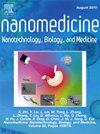Muscle cytotoxicity and immuno-reactivity analysis of the porous carbon nanospheres fabricated by high temperature calcination.
IF 4.6
2区 医学
Q2 MEDICINE, RESEARCH & EXPERIMENTAL
引用次数: 0
Abstract
Carbon-based nanomaterials have a high specific surface area, biocompatibility, and controlled mesopore structures. These characteristics make carbon nanospheres excellent carriers for drugs, biological dyes, photosensitizers, etc. Nevertheless, little is known about the impact of topological features on the surface of carbon nanomaterials on their in vivo immunoreactivity. In this study, we fabricated mesoporous carbon nanoparticles (MCNs) and solvent-processable carbon vesicles (CVs) by high-temperature calcination. The hematoxylin and eosin (H&E) staining suggested CVs' relatively poor dispersion capacity compared to MCNs and carbon precursors (CPs), leading to more severe muscle inflammation and necrosis. Immunostaining and Fluorescence Activated Cell Sorter (FACS) analysis further showed that both MCNs and CVs triggered a transient immune response in transplanted muscle and muscle-draining lymph nodes, but did not alter muscle resistance to exogenous viruses. In conclusion, this study provides insights into how carbon nanoparticles modulate the activation of immune responses in vivo.高温煅烧制备多孔碳纳米球的肌肉细胞毒性和免疫反应性分析。
碳基纳米材料具有高比表面积、生物相容性和可控的介孔结构。这些特性使碳纳米球成为药物、生物染料、光敏剂等的优良载体。然而,对于碳纳米材料表面的拓扑特征对其体内免疫反应性的影响知之甚少。在这项研究中,我们通过高温煅烧制备了介孔碳纳米颗粒(MCNs)和溶剂可加工碳囊泡(CVs)。苏木精和伊红(H&E)染色表明,与mcn和碳前体(CPs)相比,CVs的分散能力相对较差,导致更严重的肌肉炎症和坏死。免疫染色和荧光活化细胞分选(FACS)分析进一步表明,mcn和CVs在移植肌肉和肌肉引流淋巴结中触发了短暂的免疫反应,但没有改变肌肉对外源性病毒的抵抗力。总之,本研究提供了碳纳米颗粒如何调节体内免疫反应激活的见解。
本文章由计算机程序翻译,如有差异,请以英文原文为准。
求助全文
约1分钟内获得全文
求助全文
来源期刊
CiteScore
11.10
自引率
0.00%
发文量
133
审稿时长
42 days
期刊介绍:
The mission of Nanomedicine: Nanotechnology, Biology, and Medicine (Nanomedicine: NBM) is to promote the emerging interdisciplinary field of nanomedicine.
Nanomedicine: NBM is an international, peer-reviewed journal presenting novel, significant, and interdisciplinary theoretical and experimental results related to nanoscience and nanotechnology in the life and health sciences. Content includes basic, translational, and clinical research addressing diagnosis, treatment, monitoring, prediction, and prevention of diseases.

 求助内容:
求助内容: 应助结果提醒方式:
应助结果提醒方式:


